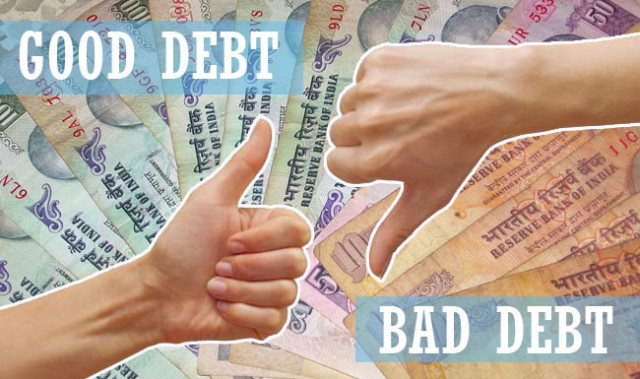Neither a borrower nor a lender be;
For loan oft loses both itself and friend,
And borrowing dulls the edge of husbandry.
In Act I, Scene III of Shakespeare’s Hamlet, Polonius utters these words to his son, Laertes, who is heading off to University. And for our parents and grandparents’ generation, this stood as pretty solid advice. For the most part, they avoided debt, and when they did borrow, it often did not go well.
Even when this reluctance was overcome, prospective borrowers faced great difficulty in actually getting anyone to give them a loan. Banks were rare, the informal sector charged exploitative interest rates, and availability of viable collateral was a perpetual problem.

We have come a long way from there – today Banks call us on our mobile phones demanding we accept loans from them. Documentation is minimal, collateral is not mandatory for smaller loans and even interest rates appear to be quite low.
So what’s the catch?
Well, regardless of the interest, a loan is still a liability and it means that someone is making money for nothing – and that someone is not you. On the other hand, avoiding loans altogether is not viable either, in a world where costs of assets have spiralled to where they are.
So it makes sense to try and break down the types of loans you can get into that time-honoured, Clint Eastwood-approved division of – The Good, the Bad and the Ugly.
The Good
Some types of loans are not only more acceptable than others, they are necessary. Purchasing a house, for example, is very difficult without a loan. Further, given the tax benefits available for home loan borrowers, it is strongly recommended that some amount of debt be taken for such a purchase. Moreover, the important thing here is that the loan is being used to create an asset, a place that will probably appreciate in value, and if placed on rent, give a return that will offset a part of your EMI outgo as well. Standard disclaimers still apply, though. Do not borrow to buy a dud property – the last thing you want is to sink a twenty-year home loan into a flat that does not at least increase in value 5-6 times over that period.
Apart from home loans, education loans are another type of debt that is fairly beneficial to the borrower. The returns you can expect from higher education should be sufficient to cover the cost of borrowing over a five year period, and since most Banks offer education loans at (a) concessional rates; (b) do not require repayment until the course is completed; and (c) there are tax benefits available; it is generally a good idea to finance your MBA or overseas education using an education loan. As with real estate, though, a word of caution – just as a real estate investment can end up being a dud, so can a college course. Unless the University and the course have an established track record of placing students, it may not be a good idea to risk taking a loan.
The Bad
This…is going to be controversial, but any loan taken to finance a non-productive asset is a bad idea. A car (unless you’re going to use it to earn money, for your business etc.), a TV, an air-conditioner…banks are willing to throw money at you to finance purchases of white goods, and it is often tempting to go for this – after all, if you can get that lovely 55-inch UHD TV on your wall five years earlier than it would take if you tried to save up for it – hey, anyone would be tempted, right?
Wrong. Too many young people fall into this trap, taking loans to buy items that will be worth nothing by the time the EMI’s are paid. When you calculate the interest burden, you generally pay interest that is nearly one-third the actual cost of the item purchased. That’s right – your flashy TV or your fancy car can end up costing anything from 10 – 35% more depending on your loan tenure. Worst of all, there are no tax benefits available for these.
The Ugly
But the worst type of liability you can incur is the ‘consumption’ loan. The loan that does not even create an asset. Borrowing to pay for a wedding, or a foreign vacation, or any expense of that nature – can be the most ruinous thing you do. Such loans – generally couched under the guise of personal loans – carry the highest interest burden, and have no tax benefit whatsoever. With no underlying asset, if you fail to pay up, you do not have anything that the bank can re-possess, which means that your other assets and savings, which have nothing to do with the loan itself, are then liable to be confiscated.
In conclusion, borrowing is not quite the bad word it was when Hamlet was written, but it is still important to have your priorities straight when it comes to taking a loan. Prudence and discretion in financial matters might sound unglamorous, but when it comes to signing on that loan agreement, do ask yourself – is this ‘Good’, ‘Bad’ or ‘Ugly’?































Worth it. Salutation…..